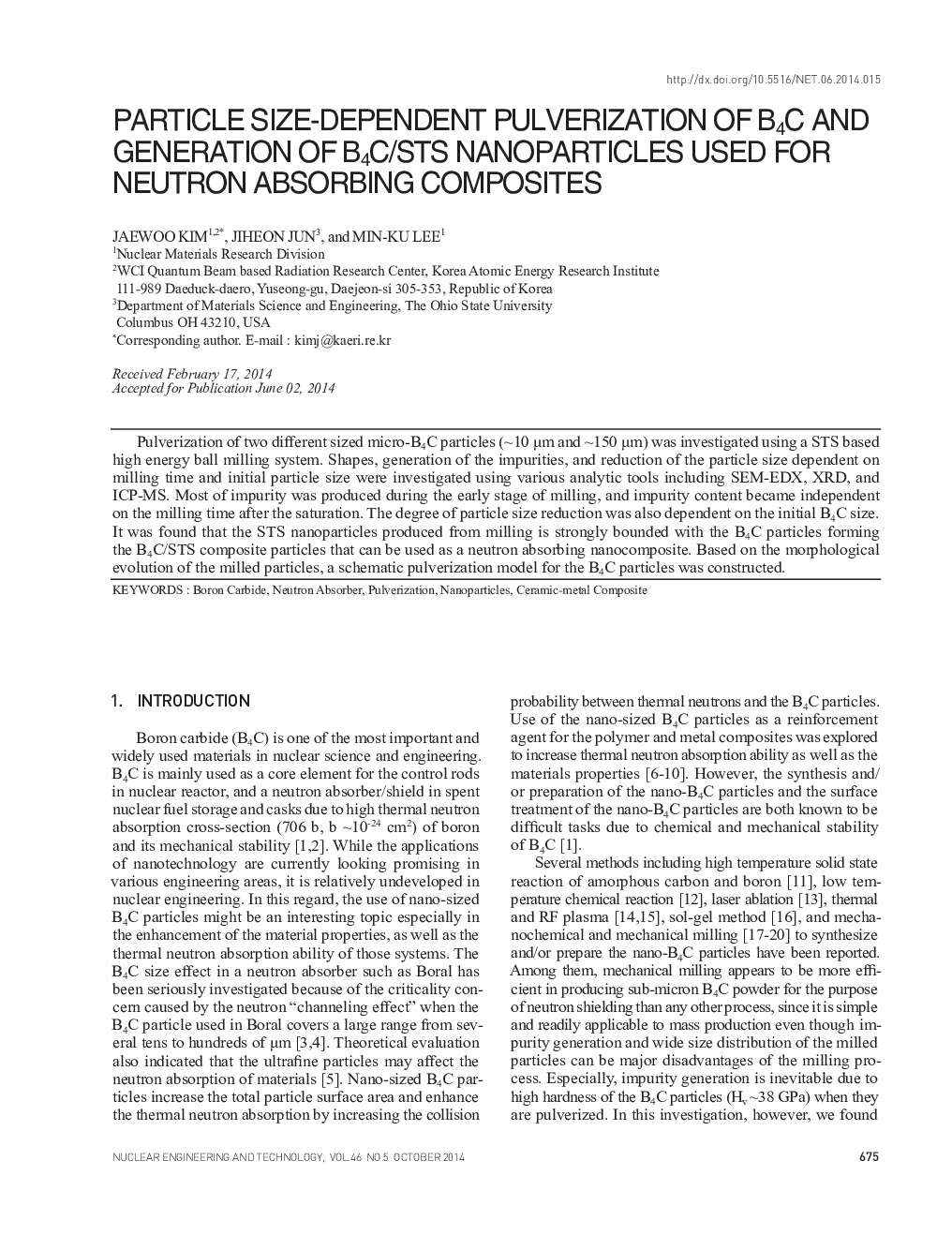| Article ID | Journal | Published Year | Pages | File Type |
|---|---|---|---|---|
| 1740211 | Nuclear Engineering and Technology | 2014 | 6 Pages |
Pulverization of two different sized micro-B4C particles (∼10 μm and ∼150 μm) was investigated using a STS based high energy ball milling system. Shapes, generation of the impurities, and reduction of the particle size dependent on milling time and initial particle size were investigated using various analytic tools including SEM-EDX, XRD, and ICP-MS. Most of impurity was produced during the early stage of milling, and impurity content became independent on the milling time after the saturation. The degree of particle size reduction was also dependent on the initial B4C size. It was found that the STS nanoparticles produced from milling is strongly bounded with the B4C particles forming the B4C/STS composite particles that can be used as a neutron absorbing nanocomposite. Based on the morphological evolution of the milled particles, a schematic pulverization model for the B4C particles was constructed.
